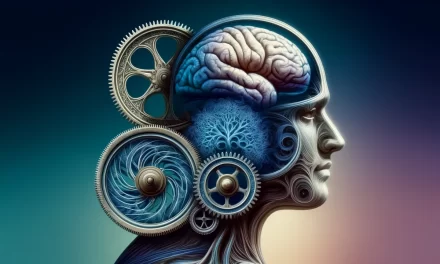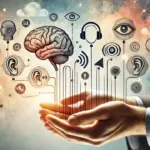Introduction
In today’s fast-paced world, finding moments of calm and clarity can be challenging. Mindfulness, the practice of being present and fully engaged in the current moment, has emerged as a beacon of hope for many seeking solace from the chaos. As I delved deeper into the world of mindfulness, I stumbled upon a powerful tool that can enhance this practice: Neuro-Linguistic Programming (NLP). At its core, NLP is about understanding the language of our minds and using it to bring about positive changes in our lives. When combined with mindfulness, NLP can offer transformative experiences, making our journey into self-awareness more profound and impactful. Whether you’re a student, a therapist, a business professional, or a housewife, integrating NLP into your mindfulness routine can open doors to a deeper understanding of oneself and the world around. In this blog post, I will guide you through the synergy of mindfulness and NLP, offering insights and techniques that can be easily incorporated into your daily life. Let’s embark on this enlightening journey together and discover the myriad ways NLP can enhance your mindfulness practice.
Understanding the Basics of NLP
Neuro-Linguistic Programming, commonly known as NLP, might sound like a complex term, but its essence is quite straightforward. “Neuro” refers to our nervous system, through which we experience the world using our senses. “Linguistic” pertains to the language and non-verbal communication systems we use to give meaning to our experiences. Lastly, “Programming” is about the patterns of behavior and thought we learn and develop over time.
At its heart, NLP is a tool that helps individuals understand their thought processes, emotions, and behaviors. By tapping into the language of our minds, I’ve found that NLP offers a unique approach to personal development and communication. It’s like having a manual for the mind, allowing us to “reprogram” negative patterns and replace them with more positive and constructive ones.
For those new to NLP, it’s essential to recognize its vast potential. From students striving for better focus in their studies to professionals like doctors and therapists aiming to enhance their communication skills, NLP offers invaluable insights. Even if you’re a housewife managing daily chores or a businessman navigating complex negotiations, understanding the basics of NLP can provide you with strategies to handle challenges more effectively.
In the context of mindfulness, NLP acts as a bridge, connecting our conscious awareness with the subconscious patterns of our mind, making our mindfulness journey even more enriching.
To know more about NLP, read this post.
Mindfulness Techniques with NLP
Mindfulness, at its core, is the art of being fully present in the moment, embracing each experience without judgment. While this sounds simple, achieving such a state of awareness can be challenging, especially with the myriad distractions we face daily. This is where NLP comes into play, offering techniques that can amplify our mindfulness practice.
One of the foundational mindfulness techniques with NLP is “anchoring.” Just as an anchor holds a ship steady amidst turbulent waters, NLP anchoring allows me to create a trigger, be it a touch, a word, or a gesture, that instantly evokes a desired emotional state. For instance, if during a moment of deep relaxation, I press my thumb and forefinger together, repeating this action in stressful situations can help recall that calm state.
Another powerful technique is the “Swish Pattern.” If there’s a particular behavior or thought pattern hindering your mindfulness journey, the Swish Pattern can help replace it with a more positive one. Visualizing the unwanted behavior and then swiftly “swishing” it away to replace it with a desired image can reprogram the mind over time.
For those specifically looking to enhance their meditation sessions, NLP offers visualization techniques that can deepen the meditative experience. By creating a mental “safe space” using vivid sensory details, I’ve found that entering a state of deep relaxation becomes more accessible.
Incorporating these NLP tools into your mindfulness practice not only enhances the experience but also provides a structured approach to achieving inner peace and clarity.
Benefits of Integrating NLP in Mindfulness Practices
The fusion of mindfulness and Neuro-Linguistic Programming (NLP) offers a holistic approach to personal growth and well-being. As I’ve delved deeper into this synergy, I’ve discovered a myriad of benefits that can transform one’s mindfulness journey.
1. Enhanced Self-awareness
- NLP techniques, when combined with mindfulness, amplify our introspective capabilities. This heightened self-awareness allows us to recognize and address deep-seated beliefs and patterns that might be hindering our growth.
2. Improved Emotional Regulation
- Through NLP’s anchoring and visualization techniques, I’ve found it easier to manage overwhelming emotions. By associating positive emotional states with specific triggers, we can swiftly shift from stress to serenity.
3. Effective Behavior Modification
- Mindfulness makes us aware of our actions, while NLP provides the tools to change them. Whether it’s procrastination, anxiety, or any other counterproductive behavior, the combination of mindfulness and NLP offers a roadmap to positive change.
4. Enhanced Communication
- NLP equips us with skills to understand and communicate more effectively. When practiced mindfully, these skills can lead to more empathetic and fruitful interactions, be it in personal relationships or professional settings.
5. Deepened Meditation Experience
- For those who meditate, integrating NLP can elevate the experience. Visualization and sensory enrichment techniques of NLP can make meditation sessions more immersive and transformative.
In essence, integrating NLP in mindfulness practices bridges the gap between awareness and action. It’s not just about recognizing our patterns but also equipping ourselves with the tools to transform them, leading to a more fulfilled and balanced life.
Neuro-Linguistic Programming Mindfulness Exercises
Incorporating Neuro-Linguistic Programming (NLP) into mindfulness practices can be a game-changer, especially for those new to the world of meditation and self-awareness. Here are some NLP exercises that I’ve found particularly beneficial in deepening mindfulness:
1. Sensory Awareness Exercise
- Begin by sitting comfortably and closing your eyes. Focus on each of your senses one by one. What do you hear? What do you feel? What do you smell? This exercise, rooted in NLP’s emphasis on sensory experience, helps in grounding and enhancing present-moment awareness.
2. Positive Anchoring
- Recall a moment of profound peace or happiness. Immerse yourself in that memory, feeling every emotion. Once fully engrossed, create an anchor, like pressing your thumb and forefinger together. Over time, this action will evoke feelings of calmness and joy, aiding in instant mindfulness.
3. Swish Visualization
- Identify a negative thought or behavior you wish to change. Visualize it clearly. Now, imagine a positive image or behavior you’d like to replace it with. Swiftly “swish” away the negative image, replacing it with the positive one. Repeating this can rewire the brain towards more constructive patterns.
4. Guided Storytelling
- Using NLP language patterns, craft a calming story or narrative. As you delve into this story during meditation, it can guide your mind to a state of deep relaxation and mindfulness.
5. Future Pacing
- Visualize a future where you’ve fully integrated mindfulness into your life. Feel the emotions, see the outcomes. This NLP technique reinforces the commitment to the mindfulness journey.
Incorporating these exercises into your daily routine can offer a structured approach to mindfulness, making the practice more accessible and impactful for individuals from all walks of life.
Training Opportunities: Mindfulness and NLP
Embarking on a journey of self-discovery through mindfulness and NLP is a commendable endeavor. However, to truly harness the transformative power of these practices, proper training is paramount. As I’ve navigated this path, I’ve recognized the significance of structured learning and guidance.
1. Certified NLP Courses
- Numerous institutions offer NLP certification programs. These courses delve deep into the principles of NLP, equipping participants with tools and techniques to integrate it into various aspects of their lives, including mindfulness practices.
2. Mindfulness Workshops
- Workshops focused on mindfulness meditation often incorporate elements of NLP to enhance the experience. These sessions provide hands-on training, allowing participants to practice and refine their skills in a supportive environment.
3. Online Platforms
- The digital age has made learning more accessible. Platforms like Udemy, Coursera, and others offer courses on both mindfulness and NLP. These online resources are perfect for those who prefer self-paced learning.
4. Retreats and Seminars
- For a more immersive experience, consider attending retreats or seminars. These events, often spanning several days, provide intensive training, merging the teachings of mindfulness and NLP.
As you consider these training opportunities, it’s essential to choose a path that aligns with your goals and learning style. With the right guidance, the fusion of mindfulness and NLP can be a life-changing experience, offering tools for personal growth, enhanced communication, and overall well-being.
NLP Tools and Strategies for Enhancing Mindful Living
Incorporating NLP into daily life can significantly amplify the benefits of mindfulness. Over the years, I’ve explored various NLP tools and strategies that have enriched my mindful living experience. Here are some that can be seamlessly integrated into daily routines:
1. Reframing
- One of the most potent NLP tools, reframing involves changing the perspective of a situation to alter its emotional impact. By consciously choosing to view challenges as opportunities, we can cultivate a more positive and mindful outlook on life.
2. Meta Model Questions
- These are specific questions designed to challenge and expand limiting beliefs. By regularly asking ourselves questions like, “What specifically makes me feel this way?” or “How does this serve me?”, we can gain deeper insights into our thought patterns and cultivate mindfulness.
3. The Power of Affirmations
- Using positive and empowering language can rewire the brain. Daily affirmations, crafted using NLP principles, can reinforce positive beliefs and behaviors, fostering a more mindful existence.
4. Visual-Kinesthetic Dissociation
- Often referred to as the “Fast Phobia Cure,” this NLP technique helps in detaching emotions from traumatic memories. By distancing ourselves from distressing events, we can live more mindfully, free from past burdens.
5. Anchoring for Mindful Moments
- Setting up anchors, like a specific touch or sound, during moments of deep mindfulness ensures that we can quickly return to that state when needed.
6. Pattern Interrupt
- Breaking habitual behaviors or thoughts by introducing an unexpected element can jolt the mind back to the present moment, enhancing mindfulness.
Incorporating these NLP strategies into daily life not only promotes mindful living but also equips us with tools to navigate challenges with grace and resilience. Embracing these techniques can pave the way for a more balanced and harmonious existence.
Mindfulness Therapy Using NLP
Mindfulness therapy, a therapeutic approach centered on cultivating present-moment awareness, has gained significant traction in recent years. When combined with the transformative tools of Neuro-Linguistic Programming (NLP), the therapeutic process becomes even more potent. In my experience, integrating NLP techniques into mindfulness therapy sessions can lead to profound breakthroughs. For instance, using the NLP “anchoring” technique, therapists can help clients evoke feelings of calm and safety during moments of distress. Additionally, the “reframing” method allows individuals to shift their perspective on traumatic events, fostering healing and acceptance. By employing NLP’s visualization exercises, clients can also enhance their meditative experiences, delving deeper into their subconscious. In essence, the fusion of mindfulness and NLP in a therapeutic setting offers a holistic approach, addressing both cognitive patterns and emotional well-being, guiding individuals towards a more balanced and fulfilling life.
Conclusion: The Future of Mindfulness and NLP
As we stand at the intersection of mindfulness and Neuro-Linguistic Programming (NLP), the future looks promising. The fusion of these two powerful disciplines offers a holistic approach to personal growth and well-being. In my journey, I’ve witnessed the transformative impact of integrating NLP techniques into mindfulness practices. As the world becomes increasingly complex, the need for tools that promote mental clarity, emotional resilience, and effective communication becomes paramount. Mindfulness and NLP, together, provide a roadmap to navigate these challenges. As research continues and more individuals embrace this synergy, we can anticipate a shift towards more mindful living, enhanced by the precision and adaptability of NLP. The future beckons us to explore, learn, and grow, harnessing the combined strengths of mindfulness and NLP to lead enriched, balanced, and fulfilling lives.










